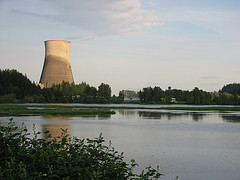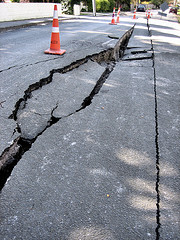Posted on 19 April 2011. Tags: areva, contingency plans, deadly tsunami, electrical power, environment minister, massive earthquake, nuclear plant, nuclear power plant, police report, protestors
 An angry group of people who are determined to oppose the Indian government’s plan to construct a nuclear power plant in the western part of India set a couple buses on fire and ransacked a hospital.
An angry group of people who are determined to oppose the Indian government’s plan to construct a nuclear power plant in the western part of India set a couple buses on fire and ransacked a hospital.
The people of Jaitapur have been fighting against the proposal since the government announced their plans of building the power plant nearly four years ago. Their group did not attract many supporters until the recent nuclear plant disaster in Japan following a massive earthquake and a deadly tsunami.
The general strike on Tuesday was called because police officers threatened to disperse protestors after attacking a police station, leaving one person dead. The streets were mostly deserted Tuesday; but at around noon, groups of people gathered in the streets shouting slogans and chants against the Indian government.
The police report said that the mob ransacked a government hospital and burned down three buses used for public transportation. There were no reports of death or injury due to the incident.
Construction of the first unit of the nuclear plant is supposed to start later this year with a proposed budget of $10 billion. If all goes as planned, this plant will become the biggest in the world. Areva, a French nuclear energy that started this project, is expected to generate 9,900 megawatts of electrical power. The first out of six units is projected to begin producing power by 2018.
Jairam Ramesh, Environment Minister, said that what happened in Japan is devastating but it should serve as a wake-up call for everyone to increase security and strengthen contingency plans. However, he insisted that it should not stop India from pursuing cleaner energy source.
Posted in Nation and World
Posted on 04 April 2011. Tags: earthquake in the indian ocean, higher grounds, magnitude earthquake, massive earthquake, pacific tsunami warning, pacific tsunami warning centre, seismologist, seismologists, tsunami alert, us geological survey
 A strong 6.7 magnitude earthquake hit the southern part of Java, Monday. Many residents fled from the Indonesian port to look for higher grounds due to fear of an impending tsunami.
A strong 6.7 magnitude earthquake hit the southern part of Java, Monday. Many residents fled from the Indonesian port to look for higher grounds due to fear of an impending tsunami.
The epicentre of the earthquake in the Indian Ocean was 15 miles deep, said the US Geological Survey.
Seismologists in India placed the earthquake on magnitude 7.1 and announced a tsunami alert, saying that the strength of the tremor can potentially cause a gigantic wave. They sent a public alert SMS and asked the citizens to forward the said SMS to as many people as possible. The tsunami alert was cancelled eventually.
The earthquake, paired with the government’s tsunami warning, caused a lot of fear and panic among the people living in the seaport town of Cilacep. They were apparently, all shouting “quake, quake!”
Suharjono, Meteorology and Geophysics Agency technical head, said that the tremors were felt in Cilacep and Pangandaran. He further said that the earthquake had woken up people from sleep but they did not receive reports of casualties.
The US Pacific Tsunami Warning Centre already said that there are no risks of a huge wave, but there is a very slight chance of a local tsunami.
David Jepson, Australian seismologist, said that they received reports that the quake was felt in Christmas Island – a remote island that is a part of the Australian territories. The epicentre of the quake was 241 kilometers away from the island.
Geoscience Australia placed the earthquake on magnitude 6.7 but they did not release a tsunami warning.
Posted in Nation and World
 An angry group of people who are determined to oppose the Indian government’s plan to construct a nuclear power plant in the western part of India set a couple buses on fire and ransacked a hospital.
An angry group of people who are determined to oppose the Indian government’s plan to construct a nuclear power plant in the western part of India set a couple buses on fire and ransacked a hospital.
 A strong 6.7 magnitude earthquake hit the southern part of Java, Monday. Many residents fled from the Indonesian port to look for higher grounds due to fear of an impending tsunami.
A strong 6.7 magnitude earthquake hit the southern part of Java, Monday. Many residents fled from the Indonesian port to look for higher grounds due to fear of an impending tsunami.